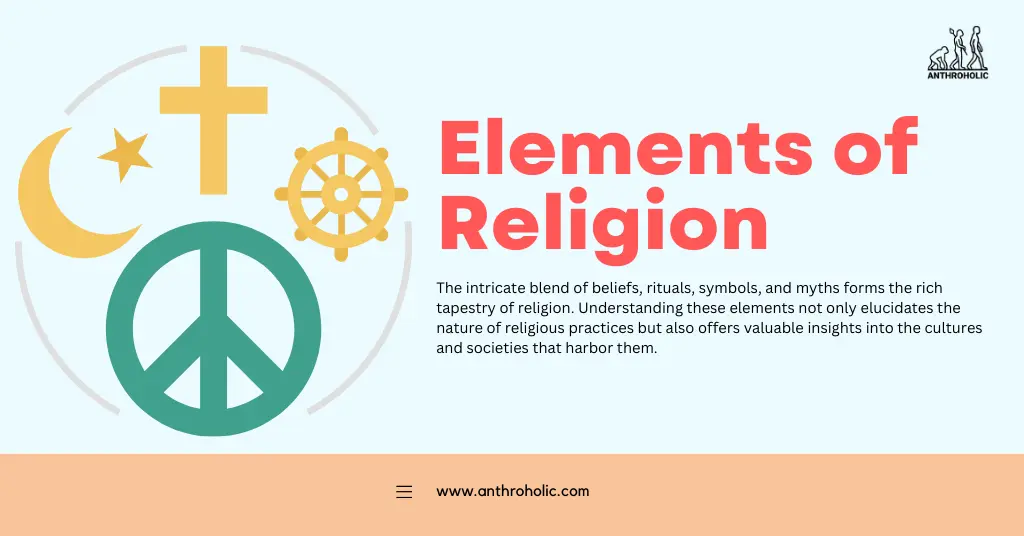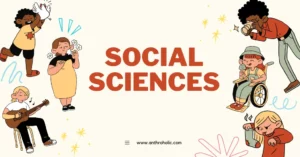AI Answer Evaluation Platform Live Now. Try Free Answer Evaluation Now
Elements of Religion
Religion is a complex and multifaceted construct, involving an intricate interplay between beliefs, rituals, symbols, and myths. From an anthropological standpoint, these elements not only provide structure to a faith but also shed light on societal norms, values, and interconnections. Anthropologists aim to elucidate these aspects, examining the various elements and their significance in religion.

Beliefs
Beliefs form the cornerstone of any religious practice, providing the fundamental axioms upon which the religion is built.
Theistic Beliefs
These involve faith in a divine or supernatural entity or entities. This could range from monotheism, such as Christianity and Islam, which believe in a singular, omnipotent God [1], to polytheism like Hinduism, which worships multiple deities.
Ethical Beliefs
Religions often provide moral frameworks that guide adherents’ behavior. For instance, the Buddhist principle of karma posits that moral actions lead to positive outcomes in this life or the next [2].
Existential Beliefs
These beliefs concern life, death, and the nature of existence. Examples include reincarnation in Hinduism and Buddhism, or the Christian belief in life after death.
Rituals
Rituals are the visible manifestation of religious beliefs, offering a way for adherents to express their faith and connect with the divine.
Life Cycle Rituals
These rituals mark significant life events:
- Birth: Examples include Christian baptism or the Hindu ‘namkaran’ ceremony.
- Adolescence: Such as the Jewish Bar Mitzvah or Bat Mitzvah.
- Marriage: Seen across cultures, including Christian weddings, Hindu vivah, Muslim nikah, etc.
- Death: Including Christian funerals or Hindu antim sanskar.
Rites of Intensification
These rituals occur in response to crises or during significant community events [3]. Examples include:
- Prayer vigils during times of tragedy.
- Fasting during the Muslim holy month of Ramadan.
- Community feasts or gatherings during Christian Christmas or Hindu Diwali.
Symbols and Myths
Symbols and myths are potent cultural tools that convey complex religious ideas in easily understandable ways.
Symbols
Symbols are physical representations that embody abstract religious concepts. They range from crosses in Christianity, the Star of David in Judaism, to the lotus in Buddhism.
Myths
Myths are narratives that explain the origins, history, and traditions of a religion. They often involve deities, ancestors, or heroes. Examples include:
- Genesis from the Bible, detailing the creation of the world [4].
- The Hindu epic Ramayana, depicting Lord Rama’s life.
Concluding Remarks
The intricate blend of beliefs, rituals, symbols, and myths forms the rich tapestry of religion. Understanding these elements of religion not only elucidates the nature of religious practices but also offers valuable insights into the cultures and societies that harbor them.
References
[1] Prothero, S. (2010). God Is Not One: The Eight Rival Religions That Run the World. HarperOne.
[2] Rahula, W. (1974). What the Buddha Taught. Grove Press.
[3] Geertz, C. (1973). The Interpretation of Cultures. Basic Books.
[4] Armstrong, K. (2005). A Short History of Myth. Canongate Books.




